Happiness is not a matter of intensity but of balance, order, rhythm and harmony.
Thomas Merton
For the first few months of our lives, it’s our goal, our solitary goal, though we’re not even aware of it. Trying to calm that sloshing inner ear so we can crawl, stand, walk, run — it’s all we struggle for during our first months. In truth, it’s what we struggle with our whole lives, always upping the challenge, always looking back at our earlier miracles of balance as if they were simple magic shop card tricks all nine-year-olds revel in. They are miracles because all motion, not just walking, is controlled falling. Coordinated near-disaster.
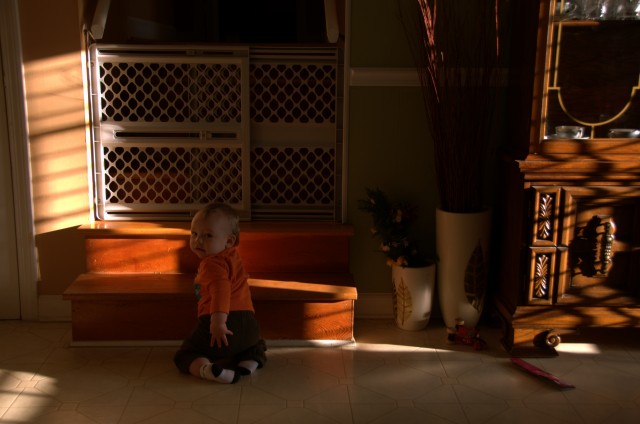
The Boy, lately a master of scooting who is graduating slowly to crawling, nonetheless likes to press his luck and try the stairs. It strikes him suddenly, this urge that, like Everest to George Herbert Leigh Mallory, inspires him to climb simply “because it was there.” Often he’s on the other side of the room when he realizes he hasn’t ascended the stairs in some time — usually a few minutes — and with a shout of recognition, flings his entire body forward, catching his whole upper weight with his chubby arms, lowering himself into position, then crawling like some new army recruit scooting under the barbed wire of an obstacle course. There’s not much question of balance in this scooting, but the force with which he throws himself forward from a sitting position to all fours rivals an Olympic tumbler’s dismount of the high bar: a loud thud after moments of seeming almost to hover in the air, most of us holding our breaths even though we know, most likely, he will make it.
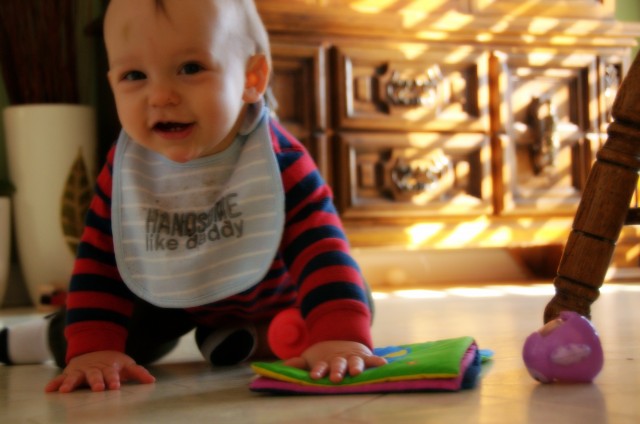
The slick torture of our hardwood floors (with the old linoleum of the kitchen) has made crawling an exceptional challenge. Knees slip out from under the Boy faster than he can cope with, and after a few feet of crawling, he usually resorts to his scooting. Balance.
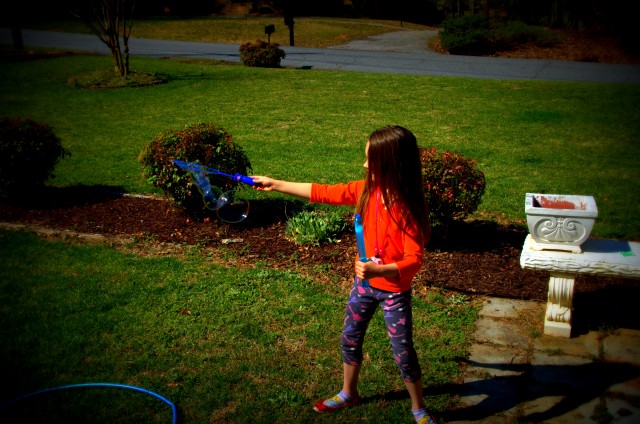
For her part, the Girl has taken on new challenges of the inner ear. Ballet would be the epitome of these new contests between self-control and inner ear, but it’s only weekly. Limited. But never mind: she finds new tests of balance daily, like twirling seemingly endlessly to transform all possible potential bubbles to kinetic bubbles. Her ability to turn in circles, evidenced by so many pieces of playground equipment, makes most sane adults dizzy at even the thought. Yet there she is, turning, turning, turning, turning, turning.
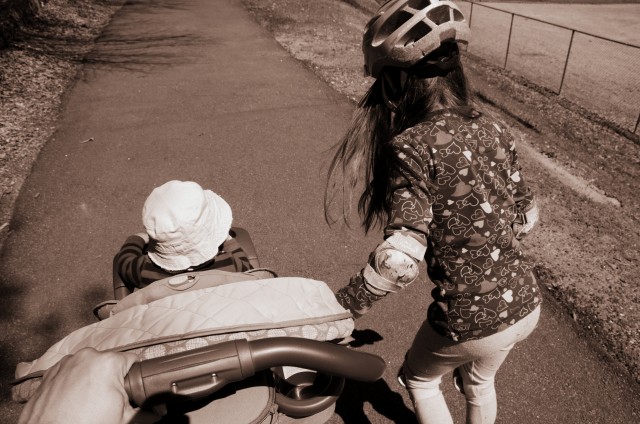
Her latest balance challenge: roller skates. They might more aptly be named “roller walks” or “roller slips,” but that’s the nature of learning to keep ever-moving feet, unpredictably moving feet, under us. She hangs on with white knuckles to the stroller, demanding that we come to a full stop before she’ll even consider –Â consider — letting go.
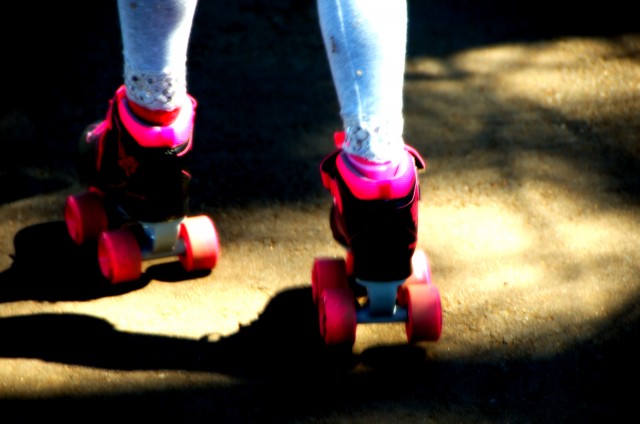
It’s been so long since I had anything with small wheels under my feet that I can’t remember what to do, what knees, arms, thighs, arms, waist, or anything else should be doing, but I’m pretty sure that those locked knees are disaster in the offing.
“Bend your knees,” I suggest. “Bend your knees a bit. Don’t keep them so straight, so locked.” She bends her knees to approximately 110 degree angles and promptly flops backward. She looks up at me with a hint of a glare, a hint of frustration, a hint even of betrayal.
“Not so much,” I smile reassuringly, remembering that each question of balance consists of yet more, seemingly smaller mysteries of the inner ear.
0 Comments